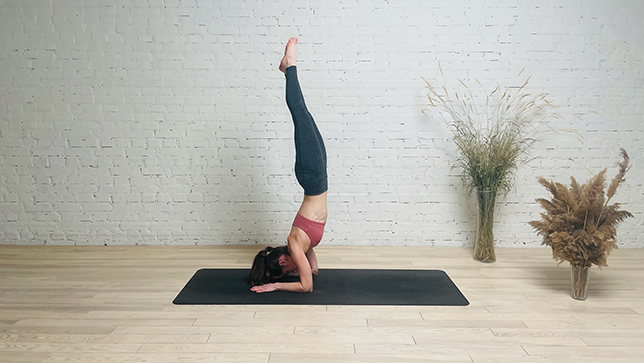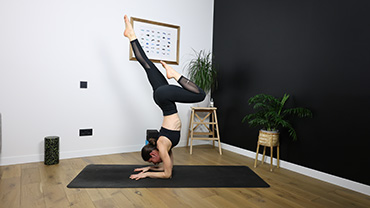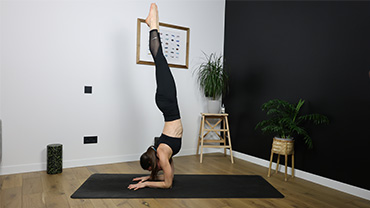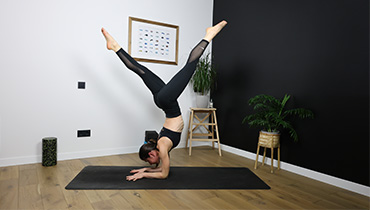Feathered Peacock Pose - Pincha Mayurasana

Contents
Feathered Peacock Pose or the Peacock Pose, also known as Pincha Mayurasana, is a challenging but immensely beneficial inversion forearm balance pose. The asana gets its name from the Sanskrit terms ‘pincha’ meaning feathered, ‘mayur’ meaning peacock, and ‘asana’ meaning posture.
In this pose, keep your shoulder blades lifted and broadened while pressing your forearms, wrist, and palms into the ground for a strong, supportive base. Pull your navel in towards your spine and squeeze your knees together, then allow your head to relax and hang between your triceps. Beginners might find it helpful to stay near a wall while learning to find balance in Pincha Mayurasana.
As you become stronger physically in Forearm Balance, your confidence and patience will also become stronger, giving you the ability to try other poses that you might not have thought possible.
Feathered Peacock basics
- Other name: Forearm Balance, Elbow Balance
- Targets: Full body
Pose Detail
- Difficulty: Advanced
- By Type: Arm Balance Yoga Poses
- Body Position: Inversion Yoga Poses
Step-by-Step Instructions
Benefits and Contraindications
Strengthens the arms, shoulders, core, and back
Practicing it improves your balance and helps you overcome your fear of falling
The forearm stand can also provide musculoskeletal benefits, including strengthened spinal muscles and improved spine alignment.1
High blood pressure
Neck, shoulder, or back injuries
Headache
Ear infections
Photo poses in different angles



Modifications, Props & Tips
- Since this pose is difficult to do, usually most people start doing half the pose which is an acceptable variation.
- You can also use the wall as a scale to raise yourself. Use the wall to mark where your shoulders and legs should be. Then, use the wall as a guide and put your feet on the wall. Slowly walk the length of the wall while supporting yourself with your elbows as explained in the steps. Once you reach the position, hold it for few seconds. This can be done till you are able to raise yourself without any support.
Frequently Asked Questions
Yes, Pincha Mayurasana (Forearm Stand) is considered challenging as it requires upper body strength, balance, coordination, and flexibility. Success in this pose often comes with practice and gradual progression.
The time it takes to learn Pincha Mayurasana varies widely based on individual factors such as strength, flexibility, and prior yoga experience. Consistent practice and gradual progression are key to mastering this pose, and it may take months or even years for some individuals.
The difficulty between Pincha Mayurasana and Handstand varies, with individual factors influencing the challenge. Both poses demand strength, balance, and practice, and difficulty may differ for each person.
Variations
- Dolphin Pose
Top Preparatary Poses
- Cow Face Pose
- Bow Pose
- Dolphin Plank Pose
- Downward Facing Dog Pose